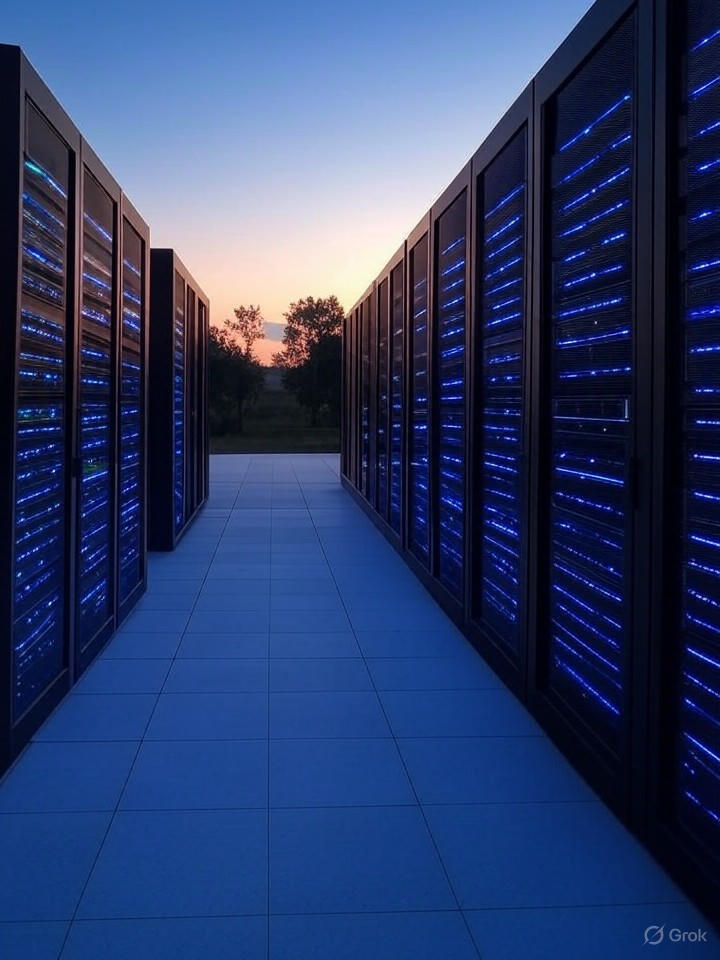In the summer of 2025, as the U.S. economy grapples with post-pandemic recovery and inflationary pressures, a new force is reshaping macroeconomic indicators: the unprecedented surge in capital expenditures on artificial intelligence infrastructure. Tech giants like Microsoft, Meta, and Alphabet are pouring billions into data centers, chips, and related hardware, creating a ripple effect that boosts GDP figures while raising questions about long-term sustainability.
This investment frenzy, often dubbed the “AI capex boom,” has become so massive that it’s distorting traditional economic metrics. For instance, recent data from the Bureau of Economic Analysis shows that nonresidential fixed investment in structures—largely driven by data center construction—jumped 13% in the second quarter, contributing significantly to overall growth.
The Scale of AI Investments and Historical Parallels
Paul Kedrosky, in his insightful analysis on paulkedrosky.com, draws striking comparisons to the railroad boom of the 1880s, when massive infrastructure spending transformed the American economy. He estimates that current AI-related capex, including data center buildouts by hyperscalers, has reached about 20% of the scale of that historic railroad expansion—and it’s accelerating. Unlike railroads, however, AI facilities depreciate rapidly, with hardware needing replacement every few years to keep pace with technological advances.
This point is echoed in a follow-up piece on the same site, Honey, AI Capex Keeps Eating… Everything, where Kedrosky notes that these expenditures are not confined to Silicon Valley but are influencing global GDP calculations, from the U.S. to emerging markets investing in AI to stay competitive.
Economic Boost Versus Hidden Risks
The immediate economic impact is undeniable. Sherwood News reported just days ago that AI-linked spending fueled more growth in the first half of 2025 than traditional consumer spending, accounting for a notable uptick in productivity metrics. This has helped prop up stock markets, with Big Tech valuations soaring—Microsoft alone projected $85 billion in capex for the year, per Financial Post coverage of Alphabet’s similar $85 billion guidance.
Yet, insiders warn of potential pitfalls. Forbes contributor Scott Raynovich, in an April 2025 article titled Could 2025 Represent a Near-Term Peak in AI Capex?, suggests this surge might be above long-term means, predicting a pullback as returns on investment face scrutiny. If AI doesn’t deliver proportional revenue gains soon, capex could taper, leading to a drag on growth.
Global Ramifications and Industry Sentiment
On a broader scale, posts on X from financial analysts like Oguz O. highlight hyperscalers committing nearly $320 billion in 2025, mostly for AI infrastructure, underscoring a competitive arms race. This sentiment aligns with Goldman Sachs projections shared on the platform, forecasting AI revenues to balloon as spending on semis and cloud infra hits $375 billion next year.
Meanwhile, WebProNews details how AI integrations with blockchain and 5G are driving innovations, but also challenges like e-waste and ethical concerns, potentially inflating costs further. In India, as noted in an Observer Research Foundation report, semiconductor demand has pushed NVIDIA’s revenues to $39 billion, redirecting capital toward specialized AI chips.
Sustainability and Future Outlook
The depreciation issue Kedrosky emphasizes is critical: AI data centers aren’t built to last like 19th-century railroads. Edward Conard’s macro roundup, referencing Kedrosky, warns that these “short-lived, asset-intensive facilities” ride declining-cost curves, necessitating constant upgrades to maintain margins. This could lead to a cycle of boom-and-bust if energy demands—already straining grids—escalate unchecked.
Looking ahead, industry insiders on X, including posts from SA News Channel, project the global AI market at $400–$644 billion in 2025, with generative AI alone growing from $25.86 billion. McKinsey’s recent tech outlook, shared via Equities.com, positions agentic AI as a top trend, potentially justifying the spend if it unlocks new productivity frontiers.
Policy Implications and Investor Caution
Policymakers are taking note. Hacker News discussions point out that AI capex is now affecting economic statistics so profoundly that it’s comparable to the 9% GDP slice from financial services, raising alarms about over-reliance on tech-driven growth. If a slowdown hits, as Raynovich predicts, it could expose vulnerabilities in supply chains and labor markets.
For investors, the message is clear: while the boom is eating into other sectors—diverting funds from traditional manufacturing—the real test will be monetization. As Dair Sansyzbayev noted on X, cloud leaders like Azure are growing over 25% year-over-year, but capex is tied to contracted revenues. If those falter, the economy might feel the indigestion.
In essence, AI capex is both a boon and a potential bubble. As Kedrosky aptly puts it, it’s “eating the economy,” but whether it nourishes or overwhelms remains the trillion-dollar question for 2025 and beyond.




 WebProNews is an iEntry Publication
WebProNews is an iEntry Publication